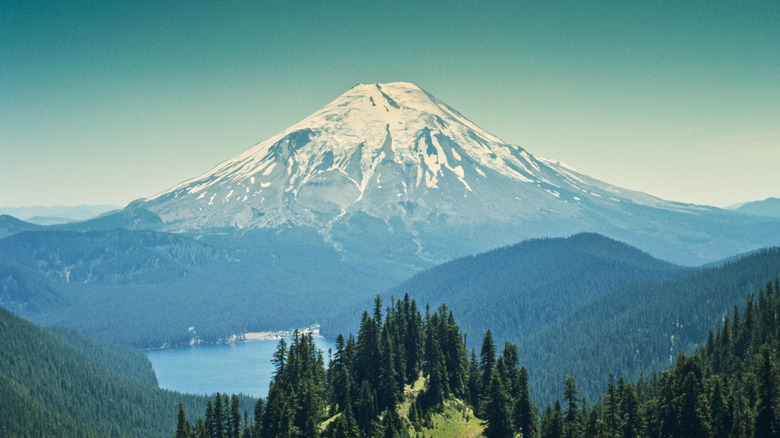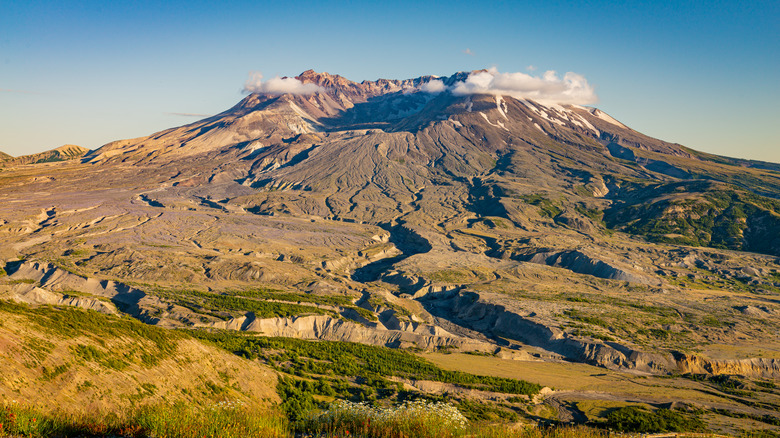Here are the dangers of hiking at Mount St. Helens
Mount St. Helens is part of the Pacific Ring of Fire, a chain of seismic activity that was formed beginning 275,000 years ago. As we said, the most recent major eruption (and there have been smaller ones) was in 1980. Because this is an active volcano, there are an average of 22 seismic events per month, which can increase when an eruption is possible. There has been renewed volcanic activity in the area since 2004, so keep that in mind.
If you’re going to try for the summit, the USDA Forest Service suggests being prepared for snow fields that don’t melt. They also suggest bringing a GPS or using an app to track your path, because people often get lost when they’re heading back after hitting the summit. If you make it to the crater, keep in mind that there are drops over 1,000 feet, and the snow cornice (snow that hangs over a ridge or the peak of a mountain) can be unstable. Make sure you check the weather at the specific place you’re climbing and be prepared with the correct gear. If you’re doing one of the higher climbs, learn the signs of altitude sickness and monitor yourself and fellow hikers.
It’s also important to keep in mind that cell service in the area isn’t the most reliable. You should check in with the park’s Climber’s Registration both before you go and after you return.
What to know if you choose to go

Want to hike and/or climb here anyway? Washington Trails Association (WTA) notes that you’ll need permits for many trails in the area. They recommend sunscreen because there isn’t a lot of tree cover. There also isn’t much water on the trails, so you’ll need to bring that as well. Dogs aren’t allowed in most places inside the park. That said, there are a lot of great trails with amazing views there, including the Eruption Trail which shows you the blast zone. You can climb the 10-mile trail (round trip) to the summit (with a permit), even if you’re not an experienced climber. You can also hike through a 2.5 mile-long lava tube called Ape Cave, though, it’s worth monitoring seismic activity before you go.
Don’t forget that this is still an active volcano, and, as previously mentioned, earthquakes occur in the area. It’s worth keeping an eye on the United States Geological Survey (USGS) sites to monitor any recent activity. (As of the time of this writing, the USGS site says there isn’t an indication of upcoming eruptions.) This information is not to scare you away from hiking in the area, which is stunningly beautiful, even in its destruction. It’s just very important to be aware of your surroundings and respect the dangers of the area you’re visiting. Just be vigilant, keep yourself up to date with conditions, and follow instructions from any park rangers if something does occur.

